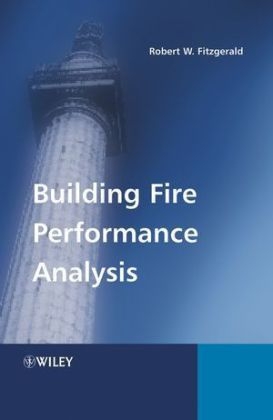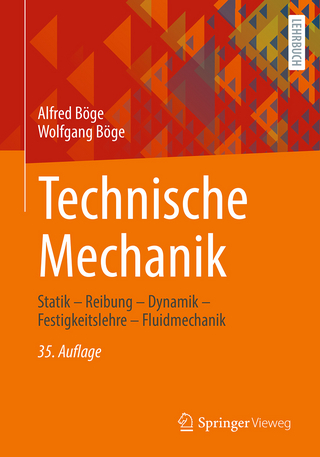
Building Fire Performance Analysis
John Wiley & Sons Ltd (Verlag)
978-0-470-86326-8 (ISBN)
- Titel erscheint in neuer Auflage
- Artikel merken
Around the world, prescriptive building codes and fire safety standards are increasingly being replaced or supplemented by performance-based standards. This book discusses the implications in the industry to provide increased design flexibility, lower costs, improved safety, and even enhanced global trade. The building fire performance evaluation procedures described in this book can be used with any code, standard, or regulatory requirements. The key feature of this publication is its aid to professionals who work in the building and other such industries to make better decisions concerning fire performance and to communicate more effectively with professionals in other disciplines working in this area.
Preface. Acknowledgement. 1 Understanding, deciding, communicating. 1.1 The destination. 1.2 Codes and standards. 1.3 Routine practices. 1.4 A way of thinking. 1.5 Evaluation levels. 1.6 Applications. 1.7 Road map. References. 2 Fire defenses. 2.1 Introduction. 2.2 Building fire defenses. 2.3 Active fire defenses. 2.4 Passive fire defenses. 2.5 Closure. 3 Basic concepts. 3.1 Introduction. 3.2 Concepts and definitions. 3.3 Performance evaluations. 4 The anatomy of building fires. 4.1 Introduction. 4.2 The building. 4.3 The fire protection systems. 4.4 The fire. 4.5 The anatomy of a building fire. 4.6 Fire in the room of origin. 4.7 Barrier effectiveness and fire propagation. 4.8 Fire department operations. 4.9 The structural frame. 4.10 Smoke movement. 4.11 Life safety. 4.12 Performance evaluations and risk characterizations. 4.13 Summary. 5 A way of thinking. 5.1 Introduction. 5.2 The building/fire performance system. 5.3 Performance evaluations. 5.4 The window of uncertainty. 5.5 Estimating performance. 5.6 Evaluation levels. 5.7 Visual thinking. 5.8 Example of effective communication. 5.9 Summary. 6 Framework for analysis. 6.1 Introduction. 6.2 Network diagrams. 6.3 Continuous value networks: concepts. 6.4 Continuous value networks: calculations and graphing. 6.5 Single value networks: concepts. 6.6 Single value networks: calculations. 6.7 Networks and performance curves: discussion. 6.8 The L curve. 6.9 The L curve for a room of origin. 6.10 The L curve for a building fire path. 6.11 L curve communication. 7 Prolog to applications. 7.1 Introduction. 7.2 Tools of the trade. 7.3 Fire prevention. 7.4 Building types. 7.5 Selection of the room of origin. 7.6 Design fire concepts. 7.7 The design fire. 7.8 Performance analysis overview. 7.9 Fire performance: M curve analysis. 7.10 Fire performance: A curve analysis. 7.11 Putting it together: the L curve. 7.12 Structural frame behavior: the Fr curve. 7.13 Smoke analysis. 7.14 Risk characterizations. 7.15 Summary. Reference. 8 Design fires. 8.1 The need. 8.2 Fire in a room. 8.3 Fire development in small rooms. 8.4 Interior design and model rooms. 8.5 Realms of fire growth. 8.6 Level 2 concepts. 8.7 Level 2 framework. 8.8 Discussion. 8.9 Large room concepts. 8.10 Level 2 framework for large rooms. 8.11 Level 3 evaluations. 8.12 Level 1 concepts. 8.13 Concepts of fire growth potential classification. 8.14 Fire growth potential classifications. 8.15 Illustrations of the classification process. 8.16 Discussion for room classifications. 8.17 alphat2 fires. 8.18 The design fire. 8.19 The I curve. 8.20 Thoughts on design fires. 8.21 Summary. Reference. 9 Barriers and multiroom fires. 9.1 Introduction. 9.2 Barrier functions. 9.3 Concepts for barrier evaluations. 9.4 Barrier performance descriptors. 9.5 The barrier/space module. 9.6 Summary. 10 Barrier performance. 10.1 Pause for review. 10.2 Chapter organization. 10.3 The standard fire test. 10.4 Standard test discussion. 10.5 Fuel load. 10.6 Ingberg theory. 10.7 Understanding fire severity better. 10.8 Other theories. 10.9 Discussion. 10.10 Awareness pause. 10.11 Estimating barrier performance. 10.12 Catalog barrier curves. 10.13 Mathematical cohesiveness. 10.14 Material behavior in fires. 10.15 Heat energy application. 10.16 Real-Time estimates. 10.17 Constructing catalog curves. 10.18 Barrier effectiveness factors. 10.19 Automatic protection equipment. 10.20 Field performance T and D curves. 10.21 Applied heat energy. 10.22 Combustible barriers. 10.23 Summary. References. 11 Detection and Initial Actions. 11.1 Introduction. PART A: DETECTION. 11.2 Instrument detection. 11.3 Detection instruments. 11.4 Detection operational performance. 11.5 Detector reliability. 11.6 Instrument detector evaluations. 11.7 Human fire detection. 11.8 Combined detection modes. 11.9 Level 3 detection evaluation. 11.10 Level 1 detection. 11.11 Instrument detection analysis. 11.12 Human detection analysis. PART B: ALARM AND NOTIFICATION. 11.13 Alarm and subsequent actions. 11.14 Proprietary supervising station system functions. 11.15 Central station functions. 11.16 Remote station functions. 11.17 Auxiliary fire alarm system functions. 11.18 Occupant actions. 11.19 Human notification of the fire department. 11.20 Fire department notification analysis. 11.21 Level 3 analysis. 11.22 Level 1 analysis. 11.23 Summary. 12 Fire service manual suppression. 12.1 Introduction. 12.2 Overview of the M curve analysis. 12.3 First steps. 12.4 Fire department response. 12.5 Types of fire department. 12.6 Fire companies. 12.7 Alarm handling. 12.8 Turnout procedures. 12.9 Travel time. 12.10 Setup time. 12.11 Fire ground operations. 12.12 Finding the fire. 12.13 Establishing supply water. 12.14 Initial fire suppression considerations. 12.15 Critical fire size. 12.16 Interior fire attack. 12.17 Callery method. 12.18 Concepts in fire extinguishment. 12.19 M curve construction procedure. 12.20 Level 2 analysis. 12.21 M curve construction. 12.22 Building fire brigades. 12.23 Level 3 analysis. 12.24 Level 1 analysis. 12.25 Summary. References. 13 Automatic sprinkler suppression. 13.1 Introduction. 13.2 Sprinkler extinguishment. 13.3 The sprinkler system. 13.4 Types of sprinkler system. 13.5 Agent application. 13.6 Framework for analysis: agent application. 13.7 Operational effectiveness. 13.8 Sprinkler fusing. 13.9 Water flow. 13.10 Water discharge. 13.11 Obstructions. 13.12 Framework for analysis: operational effectiveness. 13.13 Calculating A curve coordinates. 13.14 The A curve. 13.15 Quality comparisons. 13.16 Level 3 analysis. 13.17 Level 1 evaluations. 13.18 Partially sprinklered buildings. 13.19 Fire department mutual aid. 13.20 Automatic suppression. Reference. 14 Putting it together: the L curve. 14.1 Introduction. 14.2 Fire in a space. 14.3 Performance descriptors. 14.4 The L curve for the room of origin. 14.5 Building L curve networks. 14.6 L curve calculations. 14.7 L curve discussion. 14.8 Summary. Reference. 15 Concepts in structural frame analysis. 15.1 Introduction. 15.2 Structural design. 15.3 What are we looking for? 15.4 Structural frame and barriers. 15.5 The structural frame. 15.6 Performance concepts. 15.7 Structural performance description. 15.8 Discussion. 15.9 Level 1 evaluations. 15.10 Summary. 16 Smoke analysis. 16.1 Introduction. 16.2 Overview of the process. 16.3 Smoke. 16.4 Smoke movement. 16.5 Buoyancy forces. 16.6 Natural air movement. 16.7 Influences of mechanical air pressures. 16.8 Fire department ventilation. 16.9 Tenability. 16.10 Visibility in smoke. 16.11 Building geometry. 16.12 The Sm curve. 16.13 Sm curve construction. 16.14 Design fire smoke characteristics. 16.15 Computer smoke modeling. 16.16 Building analysis. 16.17 Closure. References. 17 Building performance. 17.1 Introduction. 17.2 Scenario analysis. 17.3 Building performance summary. 17.4 Information organization. 17.5 Alternative comparisons. 18 Risk characterizations. 18.1 Introduction. 18.2 Risk characterizations. PART A: HUMAN SAFETY. 18.3 Human safety. 18.4 Overview for life safety analysis. 18.5 Human reaction to products of combustion. 18.6 Prescriptive code egress. 18.7 Plans approval for prescriptive code egress. 18.8 Overview of egress performance evaluations. 18.9 Tenability. 18.10 The analytical process. 18.11 Preevacuation activity analysis. 18.12 Movement times. 18.13 Defend in place. 18.14 Areas of refuge. 18.15 Fire department rescue. 18.16 Evaluating fire department rescue. 18.17 Fire-fighter safety. PART B: PROPERTY SAFETY. 18.18 Other risks. 18.19 Property protection analysis. 18.20 Continuity of operations analysis. 18.21 Threat to neighboring exposures. 18.22 Threat to the environment. 18.23 Closure. References. 19 Introduction to risk management. 19.1 Introduction. 19.2 Comparisons. 19.3 Process overview. 19.4 Understand the problem. 19.5 Describe the building. 19.6 Evaluate building performance. 19.7 Characterize risk. 19.8 Structure a risk management program. 19.9 Evaluate EB prevention. 19.10 Emergency preparedness. 19.11 Decision analysis. 19.12 Decision making. 20 Prevent established burning. 20.1 Introduction. 20.2 Prevent EB. 20.3 Ignition potential. 20.4 Initial fire growth potential. 20.5 Occupant extinguishment. 20.6 Portable fire extinguishers. 20.7 Evaluating occupant extinguishment. 20.8 Prevent EB: discussion. 20.9 Automatic special hazard suppression. 20.10 Carbon dioxide systems. 20.11 Dry chemical extinguishing systems. 20.12 Halogenated extinguishing systems. 20.13 Water-Spray extinguishing systems. 20.14 Foam extinguishing systems. 20.15 Explosion suppression systems. 20.16 Building evaluations for special hazard installations. 20.17 Special hazard evaluations. 20.18 Closure. Reference. 21 Decision making and communication. 21.1 Applications. 21.2 The big picture. 21.3 Prescriptive codes and performance. 21.4 Risk management. 21.5 Performance alternatives. 21.6 Packaging alternatives. 21.7 Summary. Appendix A: Analytical foundations. Appendix B: What about the Numbers? Appendix C: The role of judgment in engineering evaluations. Appendix D: Inspection Report Forms. Appendix E: Fire Safety Evaluators. Symbols and Abbreviations. Index.
| Erscheint lt. Verlag | 26.5.2004 |
|---|---|
| Zusatzinfo | Illustrations |
| Verlagsort | Chichester |
| Sprache | englisch |
| Maße | 179 x 255 mm |
| Gewicht | 1120 g |
| Einbandart | gebunden |
| Themenwelt | Technik ► Bauwesen |
| ISBN-10 | 0-470-86326-9 / 0470863269 |
| ISBN-13 | 978-0-470-86326-8 / 9780470863268 |
| Zustand | Neuware |
| Informationen gemäß Produktsicherheitsverordnung (GPSR) | |
| Haben Sie eine Frage zum Produkt? |
aus dem Bereich



